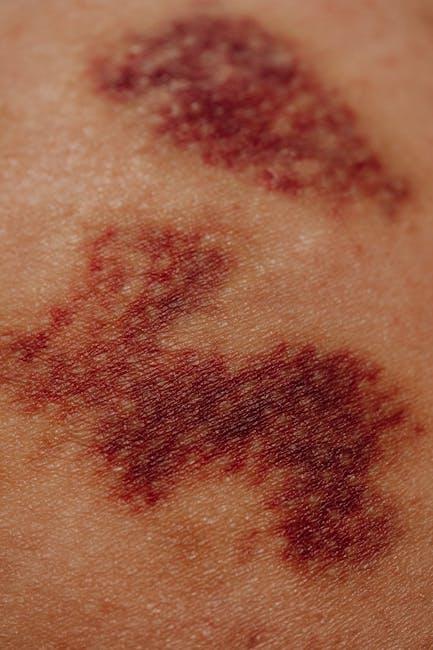
Subcutaneous and Periorbital Emphysema Following a Dental Procedure – Cureus
Dental treatments are generally safe, but like any medical procedure, they carry risks — some rare, some more common. One uncommon yet noteworthy complication is the development of subcutaneous and periorbital emphysema after dental procedures. Understanding this condition helps patients and practitioners respond effectively, ensuring swift recovery and preventing severe complications.
What is Subcutaneous and Periorbital Emphysema?
Subcutaneous emphysema refers to the abnormal presence of air or gas trapped under the skin, especially in the soft tissues of the face, neck, or chest. When this air accumulates specifically around the eyes, it is called periorbital emphysema.
In the context of dentistry, these conditions arise when air is inadvertently introduced into the subcutaneous layers during or after certain procedures — leading to swelling, discomfort, and occasionally alarming symptoms.
How Does Emphysema Develop After Dental Procedures?
Dental emphysema typically develops in procedures involving high-speed dental drills, air-driven instruments, or air syringes. The pressurized air can find its way into the soft tissue spaces through:
- An open extraction site
- A laceration in the mucosa
- Perforations created during root canal therapy or surgical procedures
- Anatomical pathways like the fascial planes connecting oral and facial compartments
Common triggers include:
- Tooth extraction, especially of lower molars
- Implant surgery
- Removal of impacted teeth
- Periodontal treatment with ultrasonic scalers
- Use of air-powered dental handpieces
Signs and Symptoms to Watch For
Patients experiencing subcutaneous or periorbital emphysema after a dental procedure may notice:
- Sudden facial swelling — especially around the cheeks, jaw, or eyes
- Crepitus — a crackling or popping sensation felt when gently pressing the swollen area
- Discomfort or mild pain localized to the swelling
- Difficulty opening the eye or eyelid swelling in the case of periorbital involvement
- Possible mild redness or warmth, though fever is rare unless infection sets in
Typically, patients are more anxious than in pain because the swelling can appear rapidly and be quite dramatic in appearance.
When to Seek Emergency Care
Although dental emphysema usually resolves on its own, seek immediate medical attention if you experience:
- Difficulty breathing or swallowing
- Severe pain or rapid swelling spread
- Fever or chills
- Visual disturbances or eye pain
Diagnosis and Medical Evaluation
Dentists or healthcare providers typically diagnose emphysema after clinical history and physical examination. Common diagnostic steps include:
- Palpating the swollen skin to feel for crepitus
- Imaging studies: X-rays or CT scans may confirm air in soft tissues and rule out other complications
- Ruling out infections: Sometimes infection and emphysema can coexist
Treatment Options for Dental Emphysema
Most subcutaneous and periorbital emphysema cases resolve with minimal intervention and conservative management:
| Treatment | Description | Duration |
|---|---|---|
| Observation | Monitoring for symptom progression with reassurance | 3 to 7 days |
| Prophylactic antibiotics | To prevent bacterial infection if mucosa is breached | 5 to 10 days |
| Analgesics | Pain management with OTC painkillers | As needed |
| Cold compress | Reduce swelling and discomfort | First 24-48 hours |
| Airway support (rare) | Emergency intervention if breathing compromised | Immediate |
In rare, severe cases where the emphysema spreads extensively or threatens airway patency, hospitalization and surgical decompression might be necessary.
Case Study: A Typical Presentation Following Wisdom Tooth Extraction
Consider the case of a 28-year-old patient who underwent extraction of an impacted lower wisdom tooth. Within 2 hours post-procedure, she noticed swelling on the left cheek extending toward the lower eyelid. On examination, crepitus was felt, and a non-tender swelling was seen around the eye (periorbital emphysema). The patient had no breathing difficulty or fever.
The treatment plan included observation, prophylactic antibiotics, cold compress, and analgesics. The swelling resolved completely over 5 days without complications.
Prevention and Practical Tips
Preventing subcutaneous and periorbital emphysema in dental practice involves:
- Using caution with air-driven instruments: Avoid directing high-pressure air in open extraction sites
- Proper surgical technique: Ensure atraumatic flap elevation and mucosal integrity
- Patient education: Inform patients to avoid actions that increase intraoral pressure post-procedure such as blowing their nose or forceful coughing
- Prompt recognition: Early diagnosis and intervention minimize complications
SEO Keywords Summary for This Article
| Keywords | Context/Use |
|---|---|
| Subcutaneous emphysema | Main condition discussed |
| Periorbital emphysema | Specific facial emphysema around the eyes |
| Dental procedure complications | General risk context |
| Dental emphysema treatment | Management focus |
| Dental swelling after tooth extraction | Symptom context |
| Oral surgery risks | Preventive discussion |
Conclusion: Awareness Saves Smiles
Subcutaneous and periorbital emphysema following dental procedures, though rare, are important conditions dental professionals and patients should recognize. Early identification combined with conservative management usually results in excellent outcomes without long-term effects. This enhances patient safety and confidence in dental care services.
If you or someone you know experiences sudden facial or eye-area swelling after dental treatment, consult your dentist or healthcare provider promptly. Being informed and proactive is the key to managing this unusual but manageable complication.


